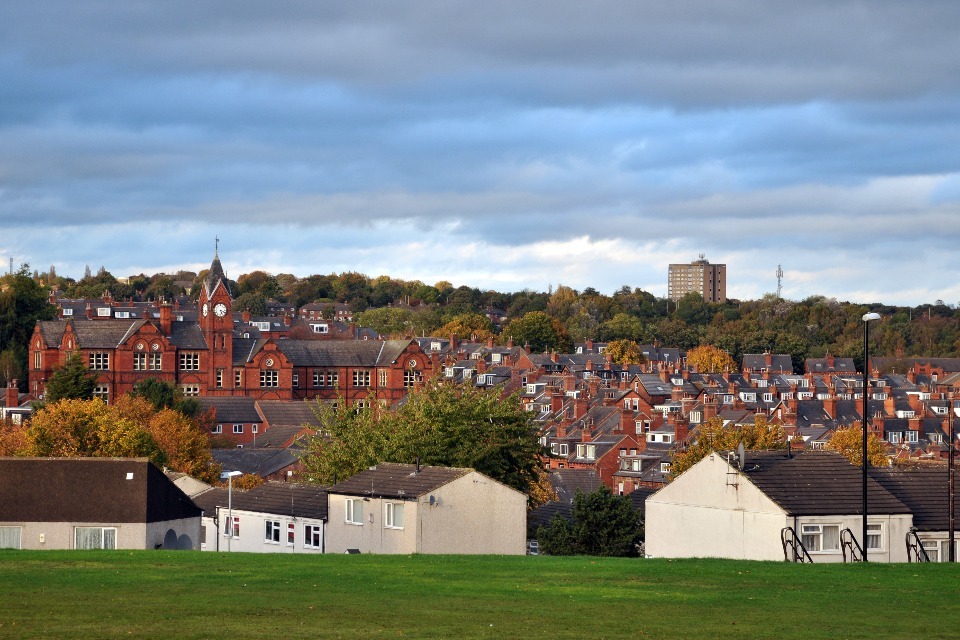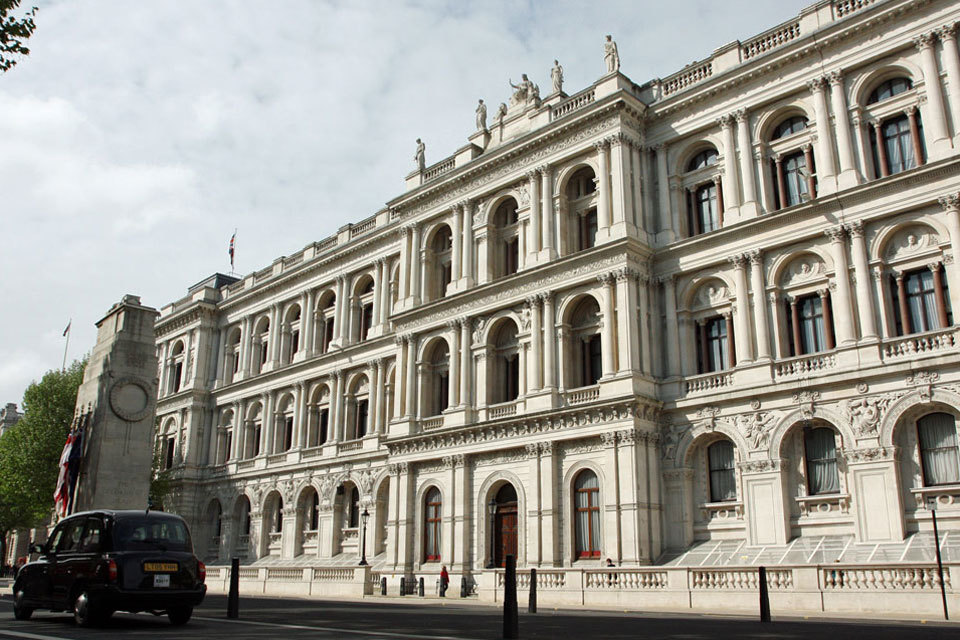- Reforms to tackle decline in council housing will ensure scheme is fairer and more sustainable
- Plans will address unprecedented pressure on housing supply and protect council housing stock
- Changes will ensure Right to Buy meets the needs of council tenants who aspire to own their own homes, and allows homes sold to be replaced
Overdue reforms to protect and reverse the decline in much needed council housing have been proposed as part of vital updates to the Right to Buy scheme.
The new changes, published for consultation today by the Deputy Prime Minister, will deliver a fairer and more sustainable scheme by continuing to pave the way for longstanding tenants to buy their own homes while at the same time crucially supporting councils to protect and rebuild their depleted housing stock.
Proposed measures include extending the length of time someone has to be a tenant before they can buy their home and protecting newly built social homes from sale through exemptions under the scheme. The consultation is also seeking views on targets for councils to replace stock sold with homes for social rent of the same size and in the same area.
Deputy Prime Minister and Secretary of State for Housing, Angela Rayner said
“For millions of people in the position I was once in, that first step into the secure social housing that changed my life has become a distant dream.
“Too many social homes have been sold off before they can be replaced, which has directly contributed to the worst housing crisis in living memory.
“We cannot fix the crisis without addressing this issue – it’s like trying to fill a bath when the plug’s not in.
“A fairer Right to Buy will help councils protect and increase their housing stock, while also keeping the pathway to home ownership there for those who otherwise might not have the opportunity to get on the housing ladder.”
The government remains committed to Right to Buy, which is an integral way for social tenants to get on the property ladder, many of whom may not otherwise be able to access home ownership.
But the reforms will make the scheme more sustainable and better value for taxpayers in light of the unprecedented pressures on housing supply. Fewer than 48,000 social homes have been built or acquired using Right to Buy receipts since 2012, despite over 124,000 council homes sold through the scheme across the same period.
The housing crisis inherited by the government has seen the demand for social housing currently at an all-time high, with over 1.2 million people stuck on housing waiting lists as well as record numbers of households, including over 150,000 children, living in temporary accommodation.
That is why the government took decisive action at the Budget to reduce maximum Right to Buy discounts to £16,000 – £38,000 depending on the area. Councils can also retain all of the receipts from sales, including the share that previously went to the Treasury which totalled around £183 million every year. This means councils can better protect their housing stock as well as scale up delivery to meet future housing need.
The government is now seeking views on the next phase of reforming Right to Buy. Proposals in the consultation include
- Increasing the three-year minimum tenancy period for tenants to be eligible to apply under the scheme.
- Reviewing the current exemptions to the scheme and whether newly built social homes should be exempt for a given period to encourage council investment in new homes.
- Seeking views on the replacement of homes with an emphasis on more social rent homes and if there should be a target to replace all future sales on a one-for-one basis.
- Increasing the period in which councils have the right to ask for repayment of all or part of the discount received when a property is sold from five to ten years.
The consultation is also proposing changes to the minimum and maximum discounts as a percentage of the property value and applying the same rules to both houses and flats. This is in addition to simplifying the receipts system to make it easier for councils to use this money to buy and build more social homes.
Ahead of wider reforms, the government has already taken steps to give councils more confidence to ramp up the delivery of new social homes. This includes increasing the cost floor protection period from 15 to 30 years under which discounts can be limited to avoid the price falling below what has been spent on building, repairing and maintaining properties.
As announced in July, councils now have greater flexibility to use Right to Buy receipts, including the ability to combine them with section 106 contributions from developers, to build and buy more homes. This is alongside £450 million for councils to secure and create homes for families at risk of homelessness.
On top of that, the Budget recently confirmed that government investment in housing will increase to £5 billion for next year. This includes £500 million in new funding for the Affordable Homes Programme to support efforts in delivering tens of thousands of new affordable and social homes across the country.
The government has also confirmed today that it will not be extending Right to Buy to housing associations because of the substantial costs to the taxpayer and the likely reduction in social housing stock.
The consultation will be open for 8 weeks and the government will publish its response in due course.
Further information
- As committed in the manifesto, the government has reviewed the increased discounts introduced in 2012 and concluded that returning discounts to their pre-2012 regional levels (ranging from £16,000 – £38,000) will deliver a fairer and more sustainable scheme as well as offering better value to the taxpayer. The discounts review was published alongside the Budget here.
- Secondary legislation to reduce the maximum cash discounts was laid in Parliament on 30 October and will come into force on 21 November.
- The government’s changes to increase the cost floor protection period from 15 to 30 years will come into effect from 21 November.
- The government will not be taking forward the policy on the sale of higher value council assets proposed in the Housing and Planning Act 2016 and will repeal these provisions when parliamentary time allows.
- While the government will not be extending the Right to Buy scheme to housing associations, eligible tenants can still buy their rented home at a discount through the Right to Acquire, with the discount depending on where their rented home is located.
Stakeholders
Cllr Adam Hug, Housing spokesperson for the Local Government Association said
“The LGA has long-called for reform to Right to Buy as the system in its current format does not work for local authorities and those most in need of social housing.
“Steps taken by government already this year to amend the scheme are positive, and the measures set out today in this consultation will help further in supporting the replacement of sold homes and to stem the continued loss of existing stock.
“Councils are keen to deepen our collaboration with the Government to increase affordable housing and help people on council housing waiting lists and record numbers stuck in temporary accommodation.”
Tracy Harrison, Chief Executive at Northern Housing Consortium said
“With more than 420,000 households on social housing waiting lists in the North, more social homes are desperately needed, and we must protect those that we already have. We’ve been consistently calling for reform to Right to Buy , so these changes are very welcome. They will help stem the loss of social homes and support local authorities to replace those that are sold.
“We particularly welcome the proposals to exempt newly build homes from the Right to Buy as this will help councils build with confidence. The confirmation that Right-to-Buy will not be extended to housing associations is also long overdue.”
Gavin Smart, Chief Executive of Chartered Institute of Housing said
“The Chartered Institute of Housing has been very concerned that there are now some 220,000 fewer homes available at social rents than there were a decade ago. The reforms announced today will help to turn this around. We have already welcomed the decision that councils can reinvest all their receipts from sales, and today’s proposal for further measures to protect newly built homes from the Right to Buy will also help. The outcome from the various measures the government is taking should mean that the Right to Buy is a much more sustainable scheme than it has been since 2012.”
Kate Henderson, Chief Executive of the National Housing Federation said
“At a time when 4.2 million people are in need of social housing in England, we strongly support the government’s aim to protect the country’s social housing and welcome confirmation that Right to Buy will not be extended to housing associations.
“Social housing is the only housing that is affordable to families on low incomes. Last year there were only 700 net new social homes due to sales through Right to Buy, whilst over 150,000 homeless children spent the night in temporary accommodation. We support people’s ambitions to own their own home and agree that routes to affordable ownership are important, but they must not come at the expense of our social housing which is a vital and increasingly scarce resource.
“Alongside these reforms, we look forward to working with the government on the long-term housing strategy that is needed to deliver it’s housing ambitions and build a generation of new social homes.”







